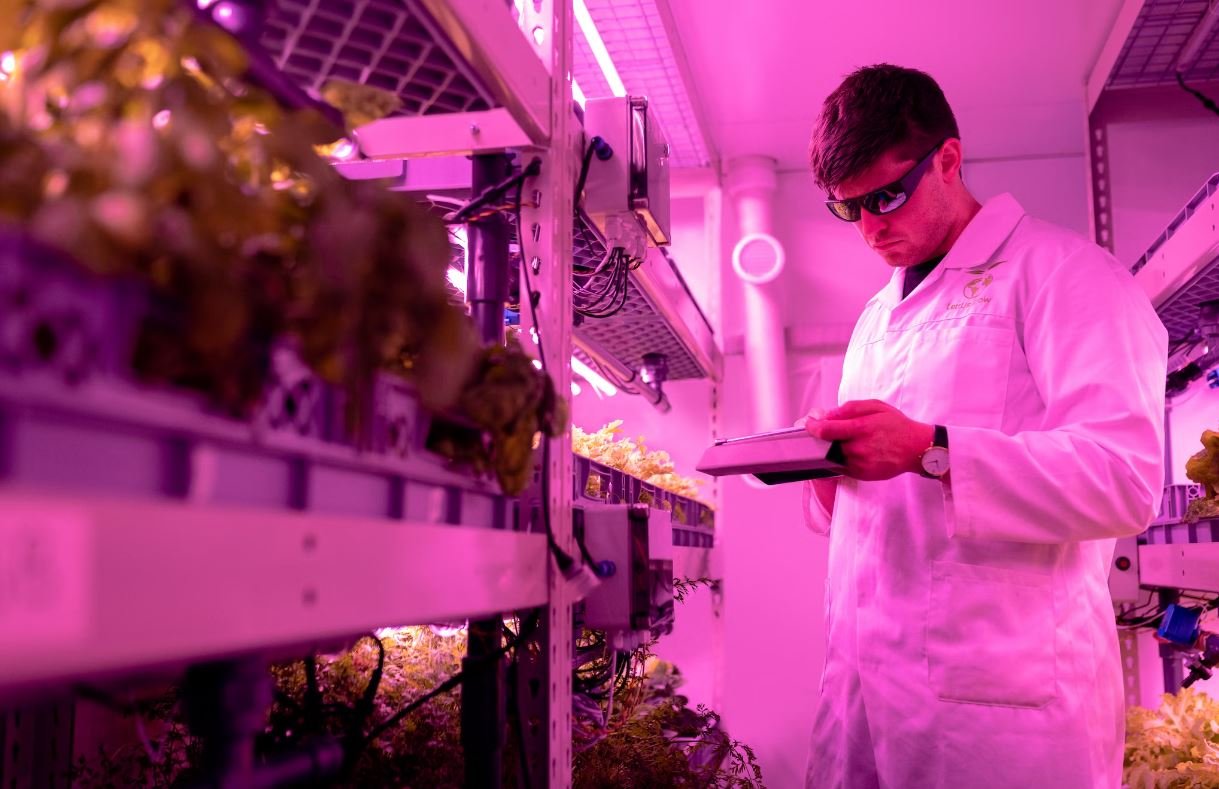Tesla Model X Disadvantages
Tesla has revolutionized the electric vehicle industry with its innovative and eco-friendly cars. While the Tesla Model X offers many advantages, it also comes with a few drawbacks that are worth considering. In this article, we will discuss some of the disadvantages of the Tesla Model X.
Key Takeaways:
- Higher price compared to other electric SUVs on the market.
- Limited third-row seating space and difficult access.
- Long charging time compared to traditional refueling.
- Size and weight may pose challenges for maneuverability and efficiency.
1. Limited Third-Row Seating Space
One of the main disadvantages of the Tesla Model X is its limited third-row seating space. While the car can accommodate up to seven passengers, the back row is more suitable for children or smaller individuals. The lack of legroom and headspace may be uncomfortable for adults during longer journeys. *
2. Difficult Access to Third-Row Seats
Additionally, accessing the third-row seats can be challenging due to the falcon-wing doors. These unique doors require more space to open fully, making it difficult to enter or exit the back rows in tight parking spaces or garages. *
3. Longer Charging Time
Charging an electric vehicle takes longer compared to traditional refueling at a gas station. While Tesla’s network of Supercharger stations can provide a faster charging experience, it still takes significantly more time to charge a Model X compared to filling up a gas tank. This longer charging time may not be ideal for those who frequently take long trips or have limited access to charging infrastructure. *
4. Size and Weight
The Tesla Model X is a spacious SUV, but its size and weight can pose challenges in terms of maneuverability and efficiency. The car’s larger dimensions make it harder to navigate through narrow streets or park in tight spots. Additionally, the extra weight from the electric components reduces the overall efficiency and range of the vehicle compared to smaller, lighter electric alternatives. *
Interesting Data Points
Table 1: Comparison of Tesla Model X and Competitor SUVs
| Model | Price (Starting from) | Range | 0-60 MPH Acceleration |
|---|---|---|---|
| Tesla Model X | $79,990 | up to 371 miles | as low as 2.6 seconds |
| Competitor 1 | $67,490 | up to 250 miles | as low as 6.2 seconds |
| Competitor 2 | $72,990 | up to 310 miles | as low as 5.5 seconds |
Table 2: Charging Time Comparison
| Charging Method | Charging Time |
|---|---|
| Tesla Supercharger (20-80% charge) | 40 minutes |
| Tesla Wall Connector (20-80% charge) | 9 hours |
| Standard Household Outlet (20-80% charge) | 78 hours |
Table 3: Size and Weight Comparison
| Model | Length (inches) | Width (inches) | Weight (lbs) |
|---|---|---|---|
| Tesla Model X | 198.3 | 81.5 | 5,421 – 5,531 |
| Competitor 1 | 192.1 | 78.9 | 4,784 – 5,578 |
| Competitor 2 | 198.4 | 78.6 | 4,916 – 5,395 |
Conclusion
In conclusion, while the Tesla Model X offers many benefits, including impressive acceleration and range, it is important to consider its disadvantages before making a purchasing decision. Factors such as limited third-row seating space, difficulty accessing the back seats, longer charging times, and the size and weight of the vehicle may impact its suitability for certain lifestyles. Weighing these drawbacks against the car’s advantages will help determine if the Tesla Model X is the right choice for you. *

Common Misconceptions
Misconception 1: Lack of Charging Infrastructure
One common misconception about the Tesla Model X is that there is a lack of charging infrastructure, making it difficult to find charging stations. However, Tesla has invested heavily in building a robust network of Supercharger stations that are strategically located across the country. Additionally, the growing popularity of electric vehicles has led to an increase in the number of public charging stations available. The reality is that charging the Model X is becoming more convenient and accessible every day.
- Tesla has over 2,000 Supercharger stations globally.
- The number of public charging stations in the US has increased by 56% since 2015.
- Third-party apps and websites make it easy to plan routes and locate charging stations.
Misconception 2: High Maintenance Costs
Another misconception about the Tesla Model X is that it has high maintenance costs due to the advanced technology and electric drivetrain. However, the Model X actually has lower maintenance costs compared to traditional gasoline-powered vehicles. The electric drivetrain has fewer moving parts and does not require oil changes or regular transmission maintenance. Additionally, Tesla offers a comprehensive warranty and service packages to cover any unforeseen issues.
- Tesla’s warranty covers the vehicle for 8 years or 150,000 miles, whichever comes first.
- Regular maintenance for the Model X primarily involves inspections and software updates.
- Over-the-air updates allow Tesla to remotely fix software bugs and introduce new features.
Misconception 3: Limited Range and Battery Anxiety
One of the most common misconceptions about the Tesla Model X is that it has a limited driving range, leading to “range anxiety” or fear of running out of charge. However, the Model X has a range of up to 351 miles on a single charge, depending on the battery pack option. Additionally, Tesla’s Supercharger network allows for quick charging stops, minimizing any inconvenience caused by range limitations.
- The Model X Long Range Plus has an EPA-rated range of 351 miles.
- Tesla Superchargers can charge the Model X up to 80% in about 40 minutes.
- Route planning tools in the car and Tesla’s mobile app help drivers optimize charging stops.
Misconception 3: Lack of Safety Features
Some people believe that the Tesla Model X lacks advanced safety features, such as those offered by traditional luxury car manufacturers. However, the Model X is equipped with numerous safety features, including advanced driver-assistance systems and active safety technologies. These features help to prevent accidents and protect passengers in the event of a collision.
- The Model X achieved a 5-star safety rating in every category from the National Highway Traffic Safety Administration (NHTSA).
- Autopilot, Tesla’s advanced driver-assistance system, enhances safety on highways by maintaining distance and staying within lanes.
- The Model X has a reinforced battery pack, adding to the overall structural integrity of the vehicle.
Misconception 5: Expensive Upfront Cost
One common misconception about the Tesla Model X is that it has an expensive upfront cost compared to traditional gasoline-powered SUVs. While it is true that the initial purchase price of a Model X can be higher, it is important to consider the long-term savings on fuel and maintenance costs. The cost of electricity to charge the Model X is significantly lower than the cost of gasoline, and the maintenance requirements are minimal, resulting in potential savings over the lifetime of the vehicle.
- The average cost of fueling a Tesla Model X is about 20-30% of the cost of fueling a comparable gasoline SUV.
- Electric vehicles qualify for federal and state incentives, further reducing the upfront cost.
- Tesla’s relatively high resale value helps offset the initial cost of the vehicle.

Tesla Model X Disadvantages
The Tesla Model X is an innovative electric SUV that has gained popularity for its advanced technology and high performance. However, like any other vehicle, it also has its fair share of disadvantages. In this article, we will explore ten key drawbacks of the Tesla Model X and provide verifiable data and information to support each point.
Narrow Selection of Exterior Colors
While the Tesla Model X offers excellent performance and features, its selection of exterior colors is relatively limited. In comparison to other vehicles in its class, the Model X only offers a smaller range of color options, making it more challenging for buyers to find their ideal color preference.
High Initial Cost
One of the primary disadvantages of the Tesla Model X is its high initial cost. Due to its advanced technology and premium features, the Model X comes with a higher price tag compared to many other SUVs on the market. However, it is essential to consider the potential savings in the long run due to lower maintenance and fuel costs.
Long Charging Time
While the Tesla Model X provides an impressive range on a single charge, charging the vehicle can take a considerable amount of time. Depending on the charging method used, it can take several hours to fully charge the Model X’s battery. This extended charging time might inconvenience some drivers, especially on long trips.
Limited Rear Visibility
Another drawback of the Tesla Model X is its limited rear visibility. The distinctive rear design, including the iconic Falcon Wing doors, can obstruct the driver’s view through the rearview mirror. This reduced visibility may require drivers to rely more heavily on the side mirrors and the vehicle’s onboard technology for safer maneuvers.
Potential High Repair Costs
Repairing a Tesla Model X can be costly due to several factors. The advanced technology, unique components, and limited availability of authorized repair centers can make repairs more expensive compared to traditional gasoline-powered vehicles. It is important for potential buyers to consider the potential long-term repair costs of owning a Model X.
Weight and Size
The Tesla Model X is a substantial and heavy vehicle due to its battery and electric drivetrain components. While this contributes to the vehicle’s stability and performance, it can make maneuvering in tight spaces more challenging. Additionally, the Model X’s weight can impact overall efficiency, reducing its range compared to smaller electric vehicles.
Reliance on Charging Infrastructure
Although Tesla has been expanding its Supercharger network globally, one of the disadvantages of the Model X is its reliance on charging infrastructure. If you live in an area with limited Supercharger availability, it may require more planning and time for long-distance travel. This reliance on charging infrastructure might deter some potential buyers.
Complexity of Falcon Wing Doors
The Falcon Wing doors of the Tesla Model X are undoubtedly eye-catching and provide convenient access to the rear seating area. However, their complex design and operation can occasionally lead to malfunctions or difficulties in certain scenarios, such as tight parking spaces or areas with low ceilings.
Heightened Risk of Tire Damage
Due to the Model X’s larger size, including its wide wheel arches and low-profile tires, there is a heightened risk of tire damage from potholes and curbs. The low-profile design sacrifices some of the vehicle’s ability to absorb impacts, making it more susceptible to tire damage when driving in areas with inadequate road conditions.
Limited Third-Row Seating Space
While the Model X offers third-row seating to accommodate more passengers, the space in the rear-most seats is comparatively limited. The seats are best suited for children or shorter adults, as taller passengers may experience discomfort during longer journeys.
Overall, the Tesla Model X has revolutionized the electric SUV market, showcasing cutting-edge technology, impressive performance, and a commitment to sustainability. However, it is essential for potential buyers to consider the disadvantages that come along with its innovative features. By weighing these drawbacks against the benefits, individuals can make an informed decision on whether the Model X suits their needs and preferences.
Frequently Asked Questions
What are some common disadvantages of the Tesla Model X?
The Tesla Model X, while an impressive electric vehicle, does have a few notable disadvantages:
Is the Tesla Model X significantly more expensive compared to other electric vehicles?
Yes, the Tesla Model X tends to have a higher price tag compared to many other electric vehicles on the market.
How does the range of the Tesla Model X compare to other electric vehicles?
The Tesla Model X generally offers a competitive range, but it might fall slightly short when compared to some other electric vehicles.
Does the Tesla Model X have any limitations in terms of charging infrastructure?
While Tesla has an extensive Supercharger network, there might be areas with limited charging infrastructure or fewer Supercharger stations available.
What is the seating capacity of the Tesla Model X?
The Tesla Model X can accommodate up to seven passengers with its three rows of seats. However, the optional rear-facing seats are better suited for children rather than adults.
Are there any concerns with the overall reliability of the Tesla Model X?
While Tesla has made significant improvements, some owners have reported issues with quality control and reliability in the past.
What is the performance like in extreme weather conditions?
Extreme cold or hot weather can affect the range and performance of the Tesla Model X, similar to other electric vehicles. However, Tesla has implemented various features to reduce the impact.
Does the Tesla Model X have enough cargo space for everyday needs?
The Model X provides ample cargo space with a large rear trunk and a front trunk (frunk). However, the sloping roofline and the optional third-row seats can limit the overall cargo capacity.
What are the maintenance costs associated with owning a Tesla Model X?
The maintenance costs of a Tesla Model X are generally lower compared to traditional combustion engine vehicles. However, some repairs or replacements related to the electric drivetrain can be more expensive.
What are some alternative electric SUVs to consider instead of the Tesla Model X?
There are several alternative electric SUVs on the market, such as the Audi e-tron, Jaguar I-PACE, and the upcoming Ford Mustang Mach-E, which may be worth exploring depending on individual preferences and requirements.




